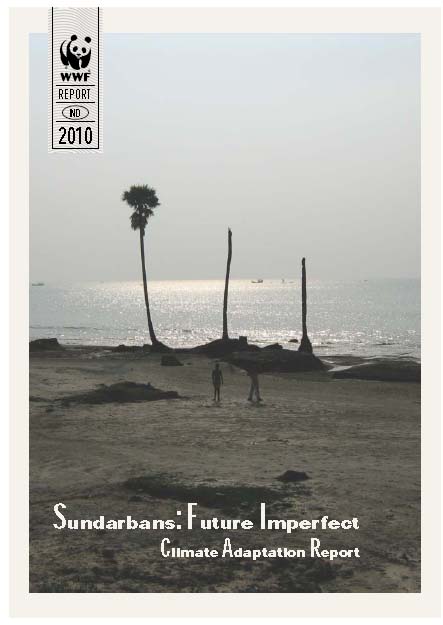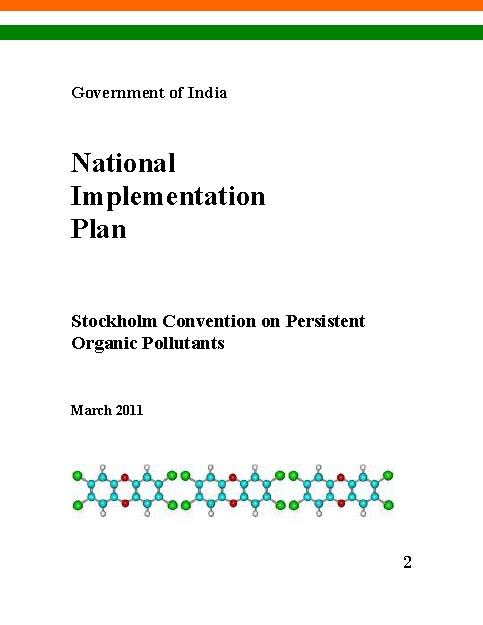Climate Change
An analysis of West Bengal Ground Water Resources (Management, Control and Regulation) Act 2005
Posted on 11 May, 2011 02:17 PMIntroduction
SANDEE's Call for research Pre-Proposal for Winter 2011 Research Competition - Apply by 30th May 2011
Posted on 11 May, 2011 10:43 AM
The South Asian Network for Development and Environmental Economics (SANDEE) is a regional network that provides research support to South Asian researchers and institutions interested in the inter-connection among development, natural resource use and the environment. SANDEE is currently inviting research pre-proposals on the Economics of Natural Resource Use and Environmental Change in South Asia. Concept notes, if accepted, will lead to an invitation to submit a full research proposal.
Enabling dry land farmers to cope with climate change in Karnataka - An article by R Dwarakinath, AME Foundation
Posted on 10 May, 2011 12:58 PMAuthor: R Dwarakinath
‘Miles to go before I sleep’ Indian agriculture, after green revolution, has fallen on to a lower trajectory of growth. But, this requires a different set of technologies and different kind of development strategy. This is necessary to lift sector production, alleviate poverty, regenerate ecology, and also to cope with climate change. A formidable but inevitable task.
Climate change has become a fact of life. The concern is assuming threatening proportions by the day. There are several efforts at the global, national and institutional levels to understand the phenomenon and to deal with its impact. At the moment, two dimensions of the problem are engaging the attention – how to mitigate, if possible reverse, the building up processes; and, how to cope with, if possible counter, the effects of climate change on human life, including farming. The answers are vague. So far, South Asia is regarded as one of the most vulnerable areas in the world. Naturally, it has become a matter of great concern, as it pertains to the well-being of the dry land farmers on the upland areas in Karnataka.
Sunderbans - A climate adaptation report by World Wildlife Fund India
Posted on 09 May, 2011 09:23 PM Beginning in 2005, WWF-India has conducted dozens of personal interviews to record how climate change impacts people's lives here and now. These perceptions demanded that s
Beginning in 2005, WWF-India has conducted dozens of personal interviews to record how climate change impacts people's lives here and now. These perceptions demanded that s
India's forests and REDD+ - A factsheet prepared by Ministry of Environment and Forests
Posted on 28 Apr, 2011 04:29 PMThe benefits of working with REDD and the need and benefits of getting more ambitious by accepting REDD+, which is about finding financial value for carbon stored in standing forests which therefore incentivises the positive elements of conservation is also elaborated here.
Global equatorial sea-surface temperatures over the last 150,000 years: An update from foraminiferal elemental analysis – A paper in Current Science
Posted on 25 Apr, 2011 10:21 AMSolar insolation changes are amongst various factors that affect sea-surface temperature, which in turn modulate global climate. Out of all the oceanic regions, equatorial region receives the maximum solar insolation and thus is the locale for the warmest waters. However, how the equatorial sea-surface temperature affects global climate, is still not clear.
Groundwater: From mystery to management - An article by TN Narasimhan
Posted on 22 Apr, 2011 12:07 PMGroundwater has been used for domestic and irrigation needs from time immemorial. It is a component of the hydrological cycle, vital for human sustenance. Unlike surface water, groundwater cannot be readily observed. Consequently, it was long considered to be mysterious or even occult in nature, influencing legal decisions relating to groundwater ownership and use.
Youth forum on climate actions and mountain issues - The International Centre for Integrated Mountain Development (ICIMOD), 8th – 12th August, 2011, Kathmandu, Nepal
Posted on 19 Apr, 2011 11:09 AMOrganizer: The International Centre for Integrated Mountain Development (ICIMOD)
Venue: ICIMOD headquarters, Kathmandu, Nepal
Description:
The overall objective of the Youth Forum is to celebrate International Year of Youth 2011/12 and International Youth Day, 12 August, through continuation of series of activities started in 2008 to build the next generation leadership in sustainable mountain development and climate change adaptation in ICIMOD Regional Member Countries (RMCs) and beyond, especially in the context of upcoming UNFCCC CoP 17 and Rio+20 meeting.
Distributional implications of climate change in India – A policy research working paper by World Bank
Posted on 14 Apr, 2011 03:49 PMThis working paper by World Bank analyzes how changes in the prices of land, labor, and food induced by modest temperature increases over the next three decades will affect household-level welfare in India.
Stockholm Convention on Persistent Organic Pollutants – Draft National Implementation Plan by the Ministry of Environment and Forests (2011)
Posted on 14 Apr, 2011 07:35 AM As per Article 7 of the Stockholm Convention, countries are required to develop the National Implementation Plan (NIP) of the Stockholm Convention on Persistent Organic Pollutants (POPs) to demonstrate how the obligations under the Convention would be implemented. The Convention was adopted with the objective of protecting human health and the environment from POPs and came into force from April 2006 in India.
As per Article 7 of the Stockholm Convention, countries are required to develop the National Implementation Plan (NIP) of the Stockholm Convention on Persistent Organic Pollutants (POPs) to demonstrate how the obligations under the Convention would be implemented. The Convention was adopted with the objective of protecting human health and the environment from POPs and came into force from April 2006 in India.
The Ministry of Environment and Forests, which is the nodal ministry for the Global Environmental Facility (GEF) and Stockholm Convention in India has prepared a NIP and has committed itself to its implementation subject to adequate assistance. It has had to harmonize the interests and stand points of different sectors involved and thereafter determine the position of the Indian government.
India understands that compliance with the obligations on Parties set out in the Convention will have a significant and positive influence not only on India‘s own chemicals management regime but also on the ultimate global success of the Convention. Since among the POPs only Dichloro Diphenyl Trichloroethane (DDT) and Polychlorinated Biphenyls (PCBs) are used in the country the inventory concentrated on DDT storages and facilities where PCB-containing electrical equipment was found.





